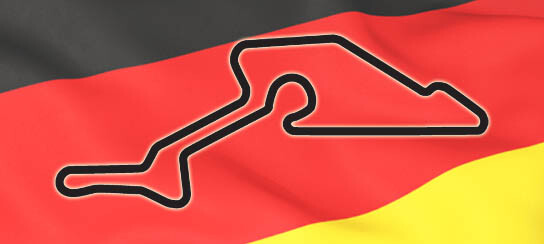BIOGRAPHY
The writing was already on the wall for the legendary 12.8 mile Nordschleife circuit before Niki Lauda crashed in his Ferrari coming out of the left-hand kink before Bergwerk during the 1976 German Grand Prix.
The Austrian's life was saved by fellow drivers Arturo Merzario, Guy Edwards, Brett Lunger, and Harald Ertl, rather than the ill-equipped track marshals, while the subsequent investigation demonstrated that the track's distances were too long for regular fire engines and ambulances.
The crash marked the end of the old Nurburgring for Formula One. It never hosted another F1 race and the German Grand Prix moved to the Hockenheimring for 1977.
The new Nurburgring was completed in 1984 and was built to meet the highest safety standards, though it has always been considered a shadow of its older sibling which majestically overlooks it. Furthermore, the new circuit, known as the GP-Strecke (Grand Prix course) had a characteristic of many of the circuits of the time, in that it offered few overtaking opportunities.
To celebrate its opening, an exhibition race was held featuring an array of notable drivers. Driving identical Mercedes 190Es, the line-up was Elio de Angelis, Jack Brabham, Phil Hill, Denis Hulme, James Hunt, Alan Jones, Jacques Laffite, Lauda, Stirling Moss, Alain Prost, Carlos Reutemann, Keke Rosberg, Jody Scheckter, Ayrton Senna, John Surtees and John Watson.
Senna won ahead of Lauda, Reutemann, Rosberg, Watson, Hulme and Jody Scheckter, being the only one to resist Lauda's overwhelming performance who – having missed qualifying – had to start from the last row and overtook all the others except the Brazilian.
Following the success and first world championship of Michael Schumacher, a second German F1 race was held at the 'Ring between 1995 and 2006, called the European Grand Prix, or in 1997 and 1998, the Luxembourg Grand Prix.
For 2002, the track was changed, by replacing the former "Castrol Chicane" at the end of the start/finish straight with a sharp right-hander in order to create an overtaking opportunity. Also, a slow Omega-shaped section was inserted, on the site of the former kart track.
Both the 'Ring and Hockenheim events have been losing money due to the high - and rising - license fees charged by Bernie Ecclestone and low attendance due to high ticket prices, therefore starting in 2007, the two circuits alternated hosting of the German GP.
Prior to the 2007 European Grand Prix, the Audi S (Turns 8 and 9) was renamed Michael Schumacher S after the seven-time champion. Schumacher had retired from Formula One the year before, but returned in 2010, and in 2011 became the second Formula One driver to drive through a turn named after them (after Ayrton Senna driving the Senna S at the Autodromo Josť Carlos Pace (Interlagos).
The Circuit
There's a quite technical low speed complex through Turns 1 to 4, with mechanical grip and suspension settings holding greater importance here than at other sections of the circuit where downforce and the aero package have greater influence.
Good high speed turn in and balance are required at Turn 5 which is approached at around 165 mph (270 kph) and taken at just over 125 mph (200 kph), before braking to around 80 mph (130 kph) for Turn 6.
Strong braking with good modulation is required into the Hairpin, which provides a good overtaking opportunity. Approached at 175 (280 kph), the drivers drop all the way to 62 mph (100 kph) through here.
Turns 8 and 9 are part of the high speed section of the circuit taken at over 155 mph (250 kph), while good mid-range pickup is required from the engine exiting Turns 10 and 11, both of which are taken between 100 - 105 mph (160 – 170 kph).
The drivers will be flat out through Turn 12, while the Chicane is the only corner around the circuit where the kerbs are used. The left is taken at under 62 mph (100 kph), the right slightly faster.
Turn 15 is vital to achieve good speed down the main straight. The drivers need to shed 62 mph (100 kph) coming into the corner and ensure a clean exit on to the power.


